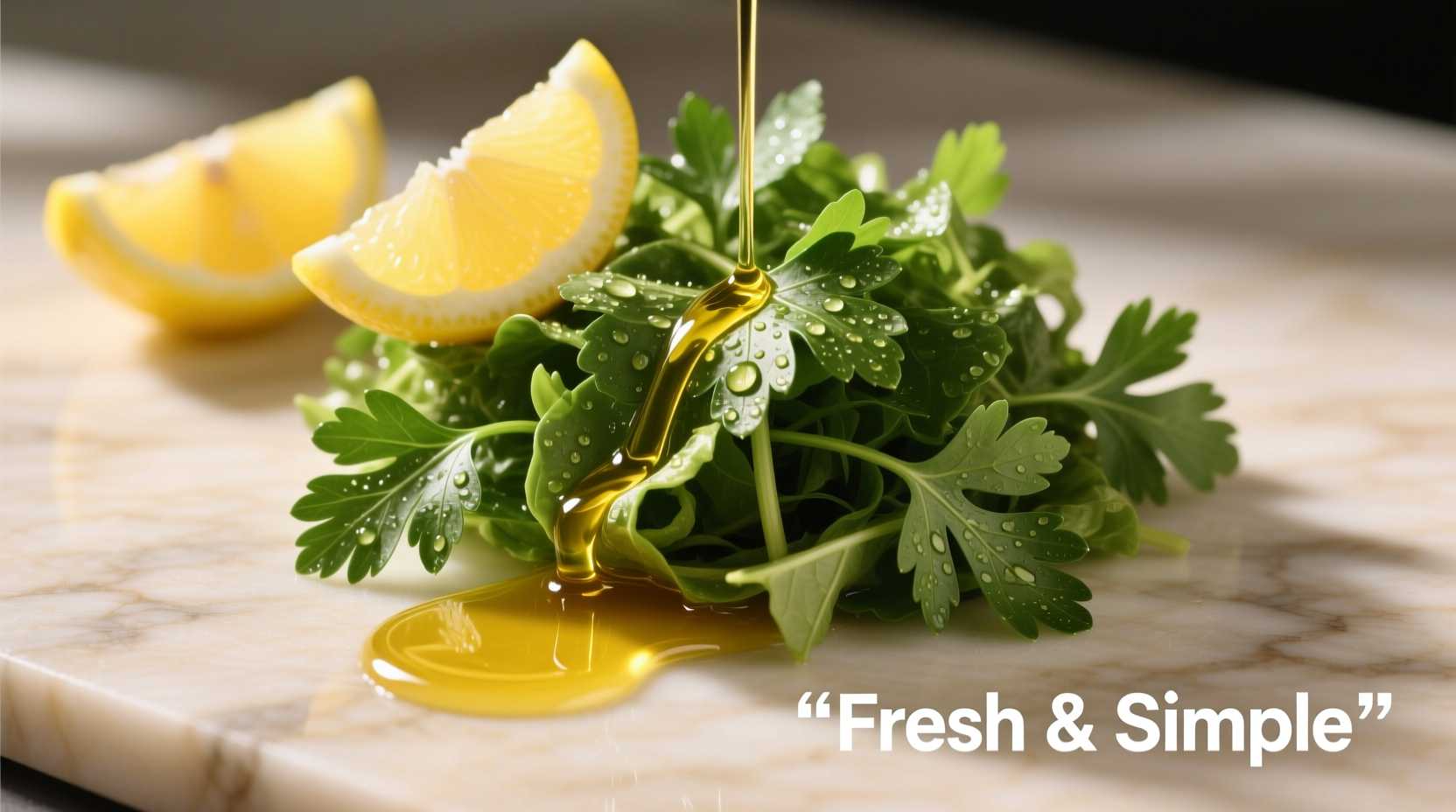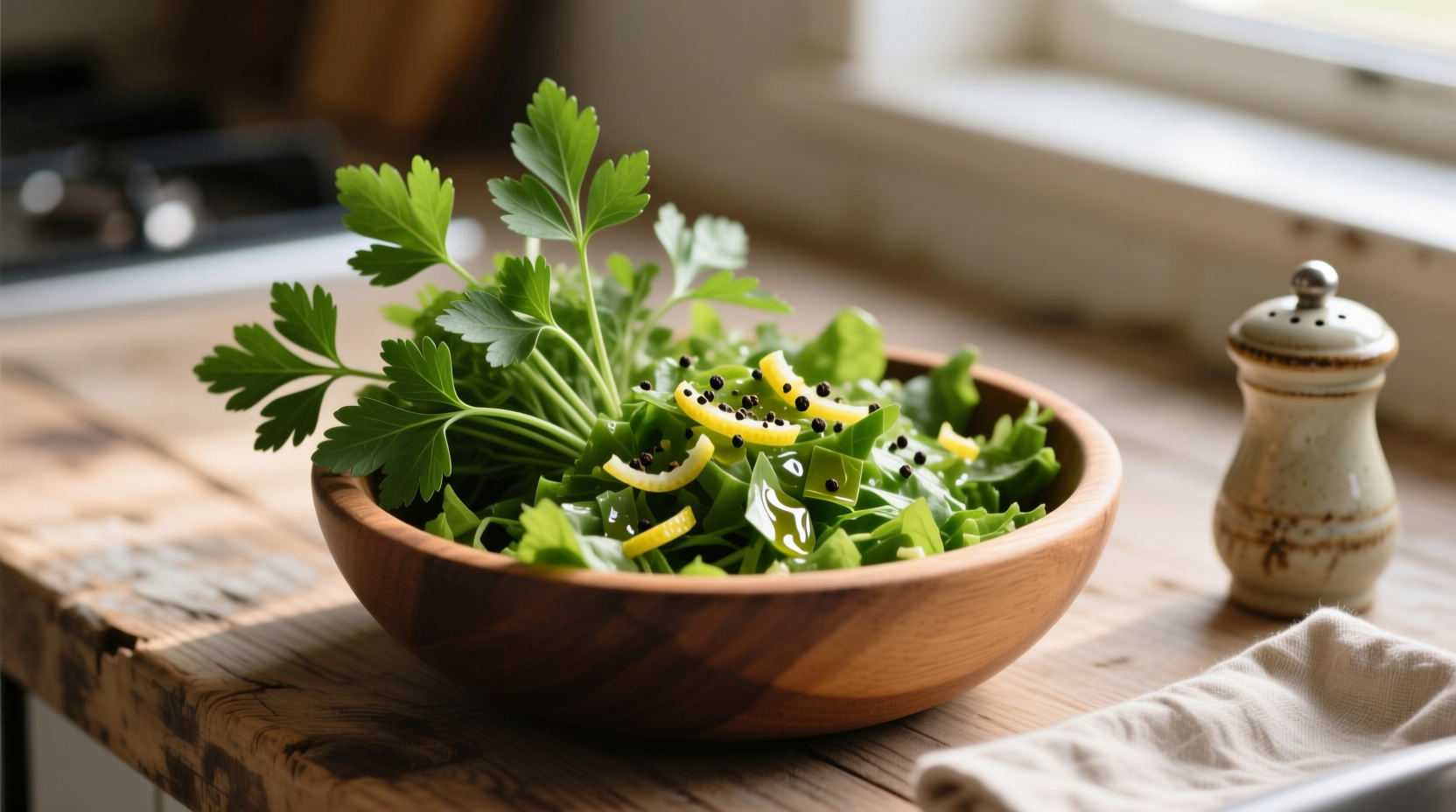The Essential Parsley Salad: More Than Just a Side Dish
When prepared correctly, parsley salad transforms from a simple garnish into a vibrant centerpiece that delivers exceptional nutrition and complex flavors. Known as Tabouleh in its traditional Levantine form, this dish has evolved across Mediterranean cultures while maintaining its core identity as a celebration of fresh herbs.
Why Parsley Deserves the Spotlight
Flat-leaf (Italian) parsley contains three times more flavor compounds than curly parsley, making it essential for authentic preparation. Recent USDA nutritional analysis confirms that a single cup provides:
| Nutrient | Amount per Cup | Daily Value |
|---|---|---|
| Vitamin K | 1,230 mcg | 1,025% |
| Vitamin C | 85 mg | 94% |
| Vitamin A | 1,215 mcg | 135% |
| Folate | 82 mcg | 21% |
These impressive nutritional values, documented by the USDA FoodData Central, explain why parsley salad has sustained popularity across generations. The vitamin K content supports bone health and blood clotting, while the vitamin C boosts immunity and enhances iron absorption from plant sources.
Mastering the Traditional Technique
The key to exceptional parsley salad lies in proper preparation sequence. Professional chefs follow this precise method:
- Soak 1/4 cup fine bulgur in cold water for exactly 20 minutes, then squeeze dry
- Finely chop 2 cups packed flat-leaf parsley (stems included for extra flavor)
- Combine with 1/2 cup diced tomatoes, 1/4 cup minced mint, and 1/4 cup finely diced cucumber
- Whisk dressing: 3 tbsp lemon juice, 1/4 cup extra virgin olive oil, 1 minced garlic clove, salt, and pepper
- Gently fold dressing into salad ingredients just before serving
Avoid the common mistake of adding dressing too early, which causes the parsley to wilt and the salad to become soggy. The optimal preparation window is 15-20 minutes before serving to maintain crisp texture.

Seasonal Adaptations for Year-Round Enjoyment
Parsley salad's versatility shines through seasonal variations that address different climate conditions and ingredient availability:
- Spring: Add edible flowers and young radish slices for delicate flavor
- Summer: Incorporate watermelon cubes and reduce bulgur for a lighter version
- Autumn: Include roasted beets and toasted walnuts for earthy depth
- Winter: Substitute pomegranate seeds for tomatoes and add preserved lemon
These adaptations follow Mediterranean culinary traditions documented by food historians at the Oxford Research Encyclopedia of Food. The seasonal approach ensures optimal flavor while respecting traditional preparation methods that have evolved over centuries.
Common Preparation Mistakes to Avoid
Even experienced cooks make these critical errors when preparing parsley salad:
- Using curly parsley instead of flat-leaf varieties
- Chopping parsley with a food processor (crushes delicate leaves)
- Adding tomatoes too early, causing excess moisture
- Using pre-soaked bulgur that hasn't been properly squeezed dry
- Adding dressing more than 20 minutes before serving
Professional chefs recommend hand-chopping parsley with a sharp knife on a wooden board, which preserves the essential oils that give the salad its distinctive aroma. The ideal chop size is approximately 1/8 inch—small enough to distribute evenly but large enough to maintain texture.
Serving Suggestions for Maximum Impact
Parsley salad serves as both a refreshing side and a satisfying main course when properly presented:
- As an accompaniment to grilled meats or fish (especially lamb and chicken)
- Wrapped in warm pita bread with hummus for a complete meal
- Served alongside roasted vegetables for a vegetarian feast
- Paired with feta cheese and olives for a Mediterranean platter
The traditional Lebanese presentation involves mounding the salad high in the center of a wide, shallow bowl, allowing the vibrant green color to shine against the contrasting red tomatoes. This visual presentation follows centuries-old serving customs that enhance both the aesthetic and flavor experience.
Storage and Freshness Guidelines
Proper storage extends your parsley salad's enjoyment while maintaining quality:
- Store undressed components separately in airtight containers
- Keep parsley stems in water (like fresh flowers) to maintain crispness
- Assembled salad lasts 1-2 days refrigerated but loses texture after day one
- Revive slightly wilted salad with a splash of fresh lemon juice
Food safety experts at the U.S. Food and Drug Administration recommend consuming fresh herb salads within 24 hours for optimal safety and quality. The high moisture content makes them particularly susceptible to bacterial growth when stored improperly.
Creating Your Signature Variation
Once you've mastered the traditional preparation, experiment with these professional enhancements:
- Add sumac for a tangy Middle Eastern twist
- Incorporate pomegranate molasses for sweet complexity
- Include toasted pine nuts for textural contrast
- Substitute quinoa for bulgur in gluten-free versions
- Add orange zest for a citrus-forward variation
The evolution of parsley salad reflects centuries of culinary adaptation. Historical records from the Encyclopædia Britannica show that similar herb-based salads appeared in ancient Persia and spread through trade routes to become the Tabouleh we recognize today. This historical context helps explain why the dish remains remarkably consistent across regional variations.











 浙公网安备
33010002000092号
浙公网安备
33010002000092号 浙B2-20120091-4
浙B2-20120091-4